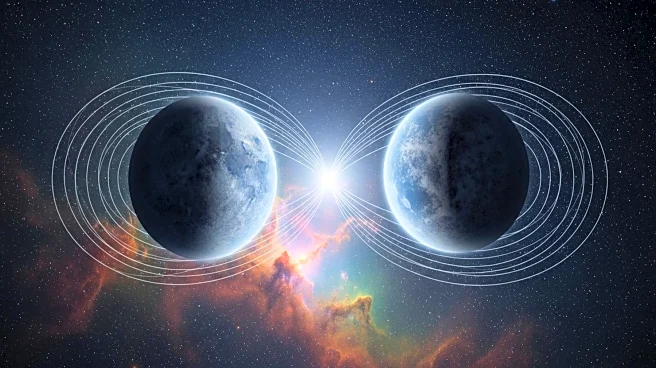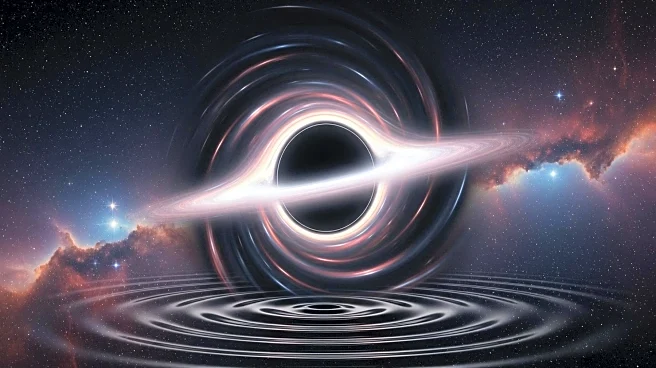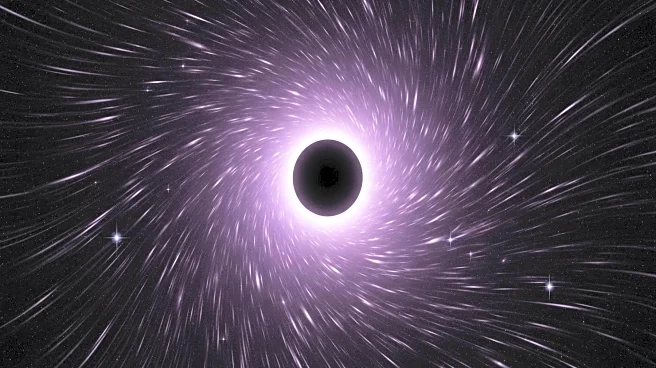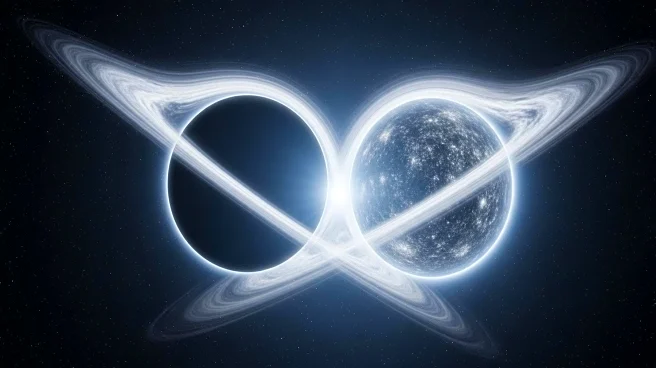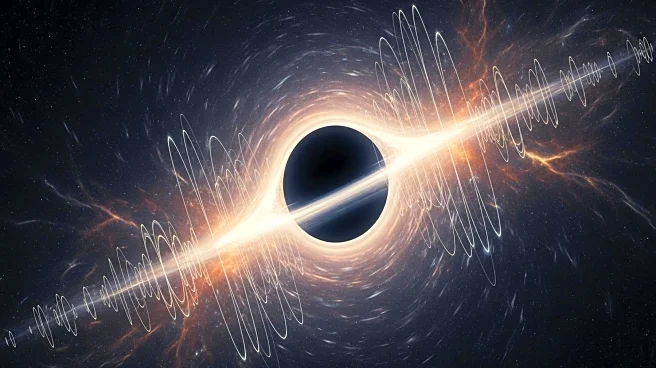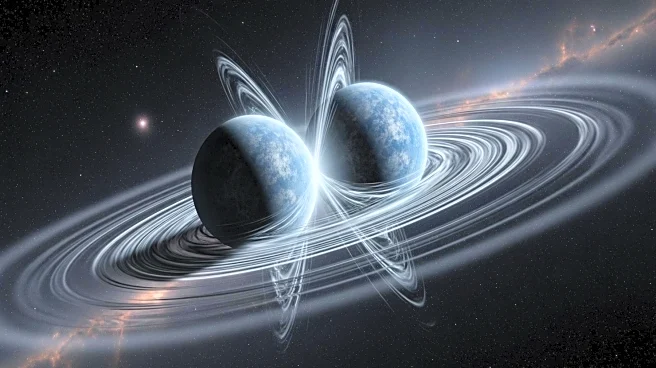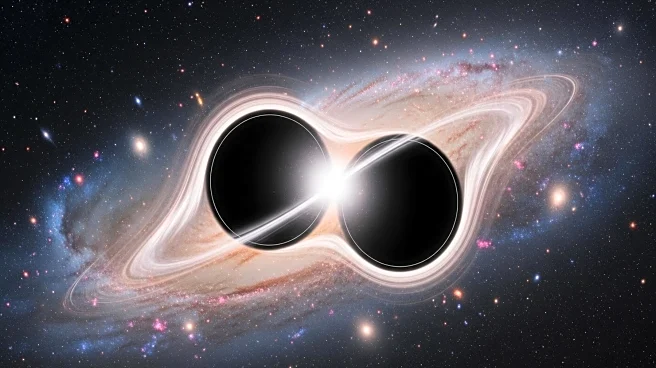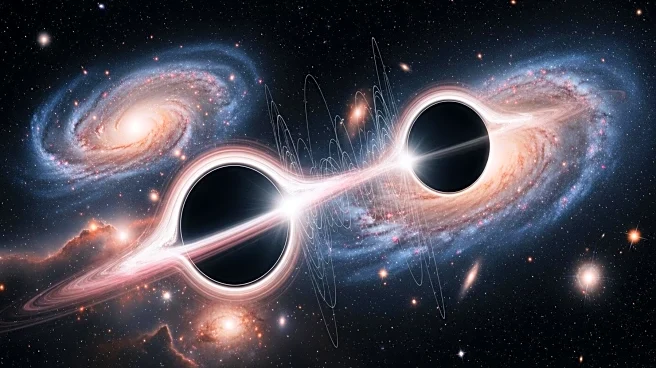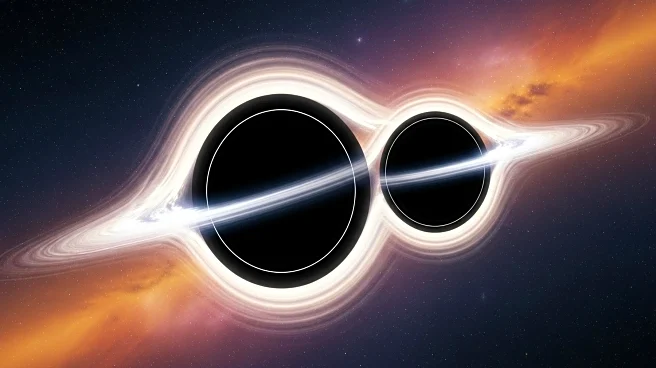What's Happening?
On September 14, 2015, scientists from the LIGO Scientific Collaboration detected gravitational waves for the first time, a phenomenon predicted by Albert Einstein's theory of general relativity. These waves were generated by the collision of two massive black holes approximately 1.3 billion years ago. The detection was made possible by the Laser Interferometer Gravitational-Wave Observatory (LIGO), which consists of two detectors located in Hanford, Washington, and Livingston, Louisiana. The discovery was confirmed by the European Virgo experiment. This breakthrough has opened a new avenue for studying the universe's most extreme events, such as black hole mergers and neutron star collisions.
Why It's Important?
The detection of gravitational waves marks a significant milestone in astrophysics, providing a new method to observe and understand cosmic phenomena. This discovery validates a key prediction of Einstein's general relativity and enhances our ability to study the universe's most violent events. It allows scientists to explore the cosmos in ways that were previously impossible, offering insights into the nature of black holes and the fabric of space-time. The ability to detect these waves also paves the way for future research and technological advancements in the field of gravitational wave astronomy.
What's Next?
Following this discovery, LIGO, along with its counterparts Virgo and KAGRA, has continued to detect numerous cosmic events, including black hole and neutron star collisions. The ongoing research aims to further understand the universe's structure and the fundamental laws of physics. Future developments may include more sensitive detectors and international collaborations to enhance the detection capabilities and expand the scope of gravitational wave astronomy.
Beyond the Headlines
The detection of gravitational waves not only confirms Einstein's theory but also bridges the gap between quantum mechanics and general relativity, two pillars of modern physics. This discovery could lead to new theoretical developments and a deeper understanding of the universe's origins and evolution. It also highlights the importance of international scientific collaboration and the potential for future discoveries in the field of astrophysics.
